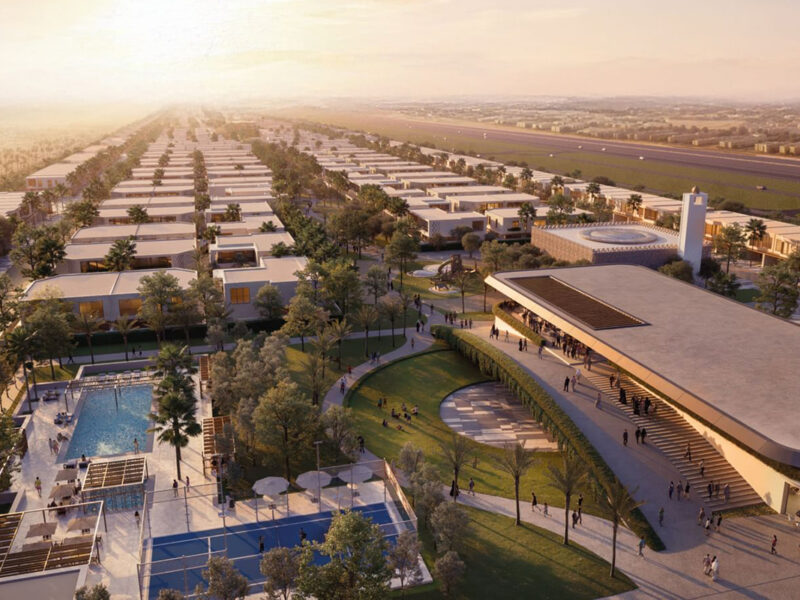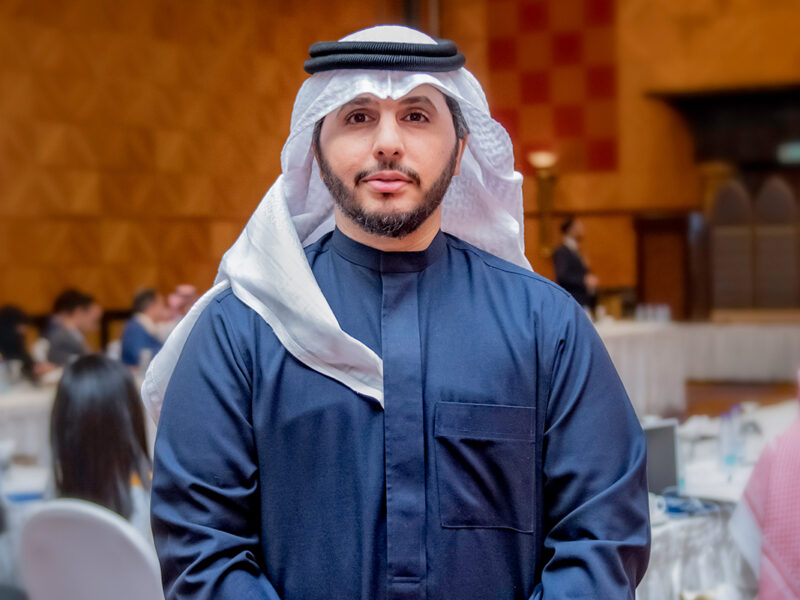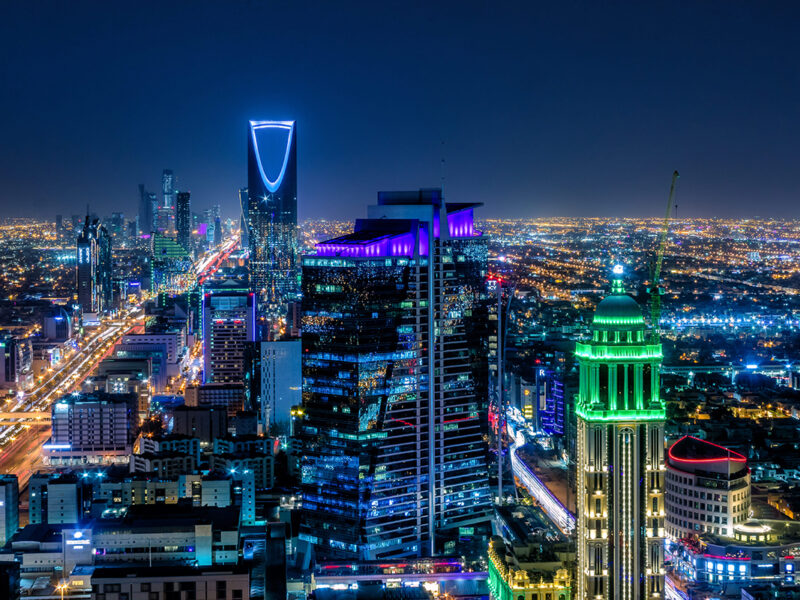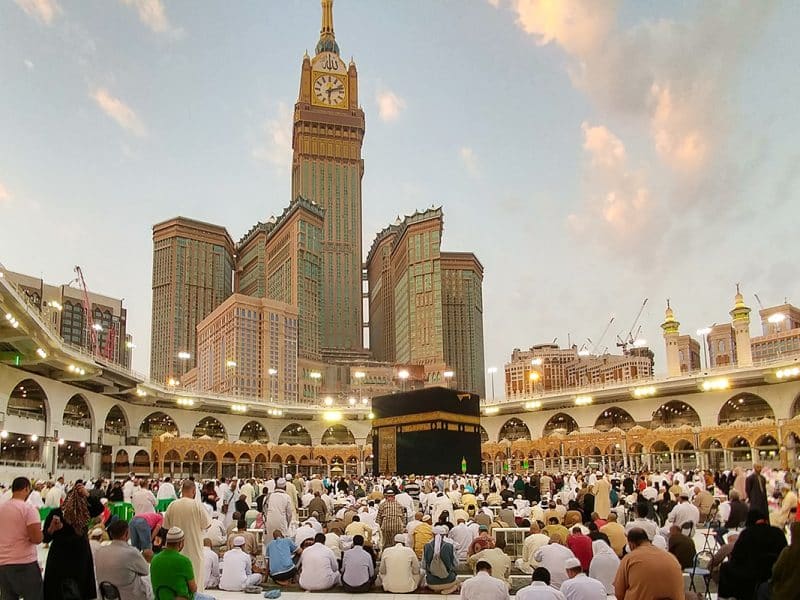|~|136proj200.gif|~|Steel fixers bend rebar into shape to form one of the 275 piles being used for the project. There are currently 100 Middle East Foundations workers on the site but this will rise to 500-600 once TAV Gulf start construction works.|~|It’s an often-quoted fact that the pace of construction in Dubai far outstrips that of anywhere else in the world, and a trip to Dubai Marina is one of the best places to see this in action.
From what is currently little more than a hole in the ground(albeit a rather large hole) will soon spring one of the Marina’s tallest buildings: the 285m-high Sulafa Tower. The project is currently in the piling stages but once construction proper gets underway in November, Sulafa Tower is scheduled to be finished by March 2009 – a mere 32 months from start to finish.
TAV Gulf, part of Turkey’s TAV construction giant, is the main contractor on the US $136 million (AED500 million) project.
Middle East Foundations is carrying out the shoring and piling, National Engineering Bureau (NEB) is the consultant, Saifco is doing the MEP works and Hitachi will be providing the 10 elevators for the building. The client for the project is Dubai-based Al Sayyah Investment.
“We began shoring and piling in July this year and are due to finish mid-October, after which time the main contractor, TAV, will begin on site,” says A Selvam, site engineer, Middle East Foundations.
The total number of piles used for the foundations is 275, with 175 finished to date. Three piling rigs are being used to drive the piles down into the ground to four different depths: 26m, 31m, 39m and 44m.
“Three pile diameters are being used: 90cm and 120cm diameters, which are all now completed; and 150cm diameter piles, of which 110 are being used,” adds Selvam.
Sulafa Tower will comprise four basements, a ground floor, four podium floors and then 70 typical floors, adding up to a total of 79 stories comprising 724 residential units. The height of the building means that the piling needs to be deep, which calls for deep excavation works.
According to Selvam, one of the biggest challenges the team has faced so far with the piling is the type of soil on the plot. “It’s black cotton soil, which is very fine and loose. This means it’s difficult to put a load on it.”
This is a challenge faced by many of the construction projects in this particular area of Dubai. “It means we have to do compaction after piling,” explains Selvam. “And then we have to excavate down again to a depth of 16m.”
The footprint for this residential tower is approximately 11,484m2 with a total built up area of around 426,720m2. When construction proper gets underway in a few months’ time, Sulafa Tower will be looking at using around 82,000m3 of concrete and 16,000 tonnes of steel, says Ani Ray, regional director, TAV Gulf.
“When we begin the actual construction process we will use post-tensioned slabs for the floors,” he explains. One reason for opting to use post tensioning on the project is because it can reduce the load on the foundations and the thickness of the typical floors, which becomes a major consideration with a tower of this height.
“Post tensioning is also quite fast and reduces the amount of concrete,” adds Ray. “It’s much faster than cast in situ – when you use post tensioning you can eliminate scaffolding because it fixes very quickly, then you can go to the next floor. It works out more expensive, but saves more time.”
According to Ray, the team will be looking to achieve a floor cycle of around seven days for Sulafa Tower.
There are around 100 labourers from Middle East Foundations currently working on site doing the piling, but when TAV begins on site in November it will mean around 500 or 600 labourers working on the project.
On TAV’s Majestic Tower project, currently underway in Sharjah, the firm has been testing out labourers from Vietnam alongside Indian workers to see how well they coped with the scorching Gulf temperatures.
“We weren’t sure how the Vietnamese labourers would manage in the summer but it went quite well,” says Ray. “We mainly gave them tasks away from the direct sun, and we’re happy with their workmanship.” The result is that TAV intends to follow the same game plan with the Sulafa Tower project in the Marina – using a mixture of Vietnamese and Indian workers when construction work gets underway.
An ever-present challenge in Dubai’s high-rise construction market – particularly in an area as built up as Dubai Marina – is adjacent construction projects.
“Another challenge that we’re likely to face in the future when construction of the tower has begun, is the other high-rise buildings that are planned close to the Sulafa Tower plot,” says Ray.
“From a construction point of view it’s a challenge to coordinate all the cranes. You may have two or three tower cranes used for the construction of each of the buildings.”
This shouldn’t be a problem, says Ray, as long as the construction schedules of the various buildings are maintained.
“Construction of the other buildings immediately around Sulafa Tower has not yet begun, and as long as there’s a gap of around one year it should be fine.”
The next building to get underway near to Sulafa Tower will be a 101 storey-high hotel on an adjacent plot for which the contract has not yet been awarded. It is also thought that Emaar is planning to build a souk in the surrounding area.
With so many tower projects planned (and already executed) in Dubai Marina, it’s imperative to have a development that stands out from the crowd.
According to Marwan Al Sayyah, CEO of Al Sayyah Investment, the key to making Sulafa Tower stand head and shoulders above the rest lies in its finishings.
“The finishings are crucial – people don’t want to buy a box,
they want to buy something they can use. One of the reasons we chose TAV Gulf for the project is the fact that they’ve worked on hotels and airports, which all require good finishings,” says Al Sayyah.
Another major difference with this project, according to Ray, is that the client is not selling apartments within the tower at the moment. “With many projects in Dubai, apartments are on sale long before construction of the building has begun. But apartments in Sulafa Tower will go on sale only after the building is substantially completed,” says Ray.
According to Al Sayyah, this will enable them to get more market feedback from customers: “It’s not about developing a model and trying to sell that model.”
Despite being in the early stages, Sulafa Tower is billed as one of the tallest towers in Dubai Marina. But given the frenetic pace of construction activity across the emirate, it’s surely not an accolade this tower can lay claim to for long.||**||








